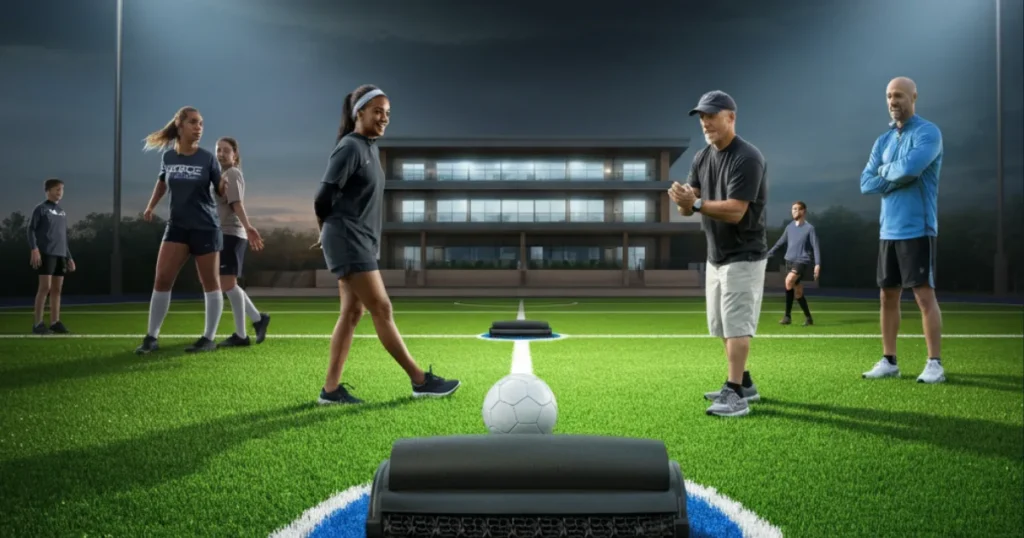Athletes, coaches, and facility managers know that the playing surface can make or break the game experience. Enter Force Turf—a cutting-edge synthetic turf designed to optimize performance, deliver durability, and offer a cost-effective alternative to natural grass. But what makes it so different, and why is it gaining traction across sports and training facilities?
This blog dives into the world of Force Turf, exploring its innovative technology, applications, and benefits compared to traditional options. Whether you’re managing a high-traffic training field or designing a new sports facility, understanding how Force Turf works can help you make a smarter investment.
What is Force Turf?
Force Turf is a high-performance synthetic turf engineered for sports and recreational use. Unlike natural grass or older synthetic surfaces, it combines advanced materials and innovative design for better durability, performance, and safety.
Key Benefits of Force Turf:
- Unmatched Durability: Withstanding high-traffic use, Force Turf delivers long-lasting performance.
- Weather Resistance: Rain, sun, or snow won’t hinder force turf’s functionality, ensuring year-round playability.
- Reduced Maintenance: Say goodbye to mowing and irrigation. Maintenance for Force Turf is minimal compared to real grass.
- Enhanced Safety: With under-layer cushioning and superior traction, the turf minimizes injury risks for athletes.
The Technology Behind Force Turf
Force Turf’s innovation lies in its intricate layers. Its structure is more than a simple fake grass covering—it’s a harmony of science and engineering. Here’s a breakdown of what sets it apart from traditional options.
Advanced Fiber Composition
The synthetic grass blades mimic natural grass in both look and feel but are composed of durable polyethylene fibers. These fibers absorb shock and reduce wear and tear, maintaining a fresh appearance even after years of use.
Layered Cushioning Systems
Underneath the top layer, Force Turf includes shock-absorbing underlayments that protect athletes from hard impacts. This added safety benefit makes Force Turf an ideal choice for contact sports like football and rugby.
Drainage Innovation
Force Turf’s drainage design prevents waterlogging, allowing for fast recovery post-rainfall. Whether you’re hosting a soccer game or a track meet, this ensures seamless play no matter the weather.
How Does Force Turf Compare to Traditional Options?
Force Turf vs. Natural Grass
- Maintenance: Natural grass requires mowing, watering, and fertilization; Force Turf does not.
- Playability: Grass fields are prone to wear, muddy patches, and uneven areas. Force Turf provides a consistent surface.
- Weather Resilience: Grass deteriorates in extreme heat or heavy rain. Force Turf remains playable year-round.
Force Turf vs. Older Synthetic Turf
- Durability: Earlier turf types wear out under frequent use. Force Turf’s materials are designed to last longer.
- Safety: Older synthetic fields were infamous for causing abrasions and burns. Force Turf’s softer fibers and cushioning mitigate these risks.
Real-World Applications of Force Turf

1. Sports Facilities
Force Turf is widely used in professional stadiums and training grounds. Its consistency and performance align with the demands of rigorous athletic use.
2. Fitness Centers
Fitness facilities incorporate Force Turf for drills that require softer, high-traction surfaces, such as functional fitness and agility training.
3. Schools & Parks
Schools and community parks use Force Turf for multi-use fields, catering to soccer, football, and recreational use. Its minimal upkeep makes it ideal for these settings.
4. Indoor Training Facilities
With its weather resistance and durability, Force Turf is an excellent option for indoor sports setups.
Installation and Maintenance Guide
Installation Process
- Site Preparation: Clearing, grading, and compacting the surface.
- Base Layering: Installing drainage and shock pad layers for durability and safety.
- Turf Installation: Rolling out the Force Turf product and securing seams with adhesive or stitching.
- Finishing Touches: Adding infill (such as silica sand and rubber granules) for optimal performance.
Maintenance Tips
- Use a turf rake to remove debris regularly.
- Check for and address seam adhesions or any areas of wear.
- Replenish infill periodically to maintain surface consistency.
Cost Analysis and ROI
While Force Turf may come with higher upfront costs compared to natural grass, its ROI is unparalleled. Here’s why it’s worth the investment over time:
- Maintenance costs are significantly reduced, saving money on water, mowing, and fertilizers.
- Durability translates into fewer replacements, with warranties often lasting 8-10 years.
- Year-round usability means greater booking opportunities for commercial facilities.
Over time, these savings add up to significant financial gains, especially for large-scale recreational facilities and schools.
What Do the Experts Say?
Force Turf has consistently earned praise from sports industry experts and facility managers. Here’s what they have to say:
- “We’ve seen a decline in athlete injuries since implementing Force Turf in our training facilities. The shock absorption is unlike anything else we’ve tried.” – John Richards, Facility Manager.
- “Residents are loving the improved playability of our park’s fields. Even after heavy rainfall, the fields are ready for use.” – Claudia Stevens, City Parks Director.
Why Force Turf is the Future of Sports Surfaces
Force Turf represents a shift in how we think about playing surfaces. It’s a solution for those who value performance, safety, and efficiency, whether you’re managing a sports facility, coaching a team of athletes, or maintaining community fields.
Advanced technology, coupled with its cost-effectiveness and lower environmental footprint, positions Force Turf as the clear front-runner in the future of sports surfaces.
Are you ready to revolutionize your field? Choose Force Turf today and provide a playing surface that athletes will love and managers will appreciate.






